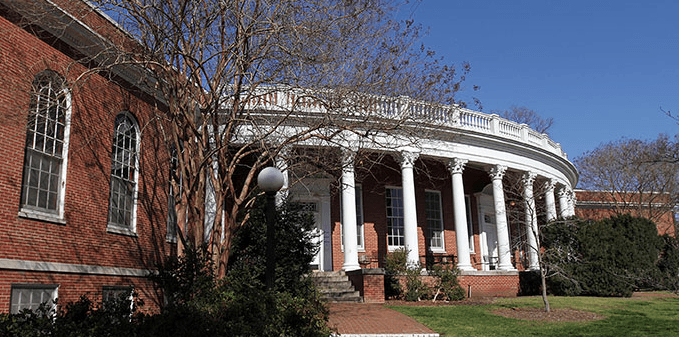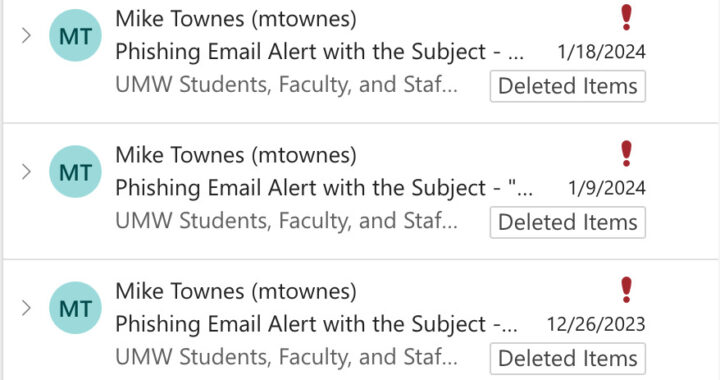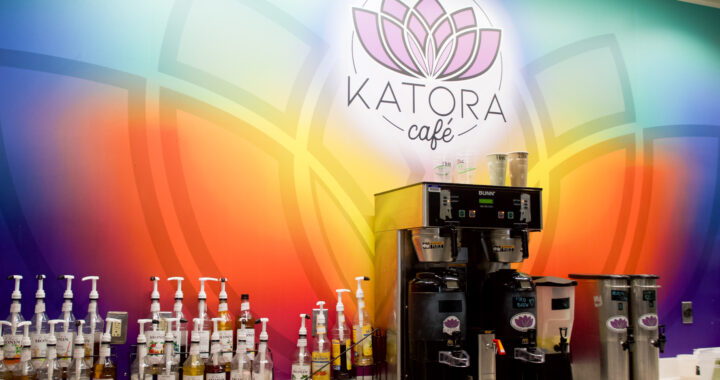Seacobeck nostalgia drives students to take souvenirs causing spike in campus stats of crime reports
6 min read
University of Mary Washington Website
By CHEYENNE ROLLINS
It’s a widely known secret among the students. Sometimes the doors to Seacobeck Hall are left open, other times they are not, and it just takes a jiggle of the doorknob to find out. If the door is locked, the windows are usually open. The windows, some have torn screens from previous break ins, but all, are large, white, and in need of a paint job. Through the windows on one side, there is a dreary, dark storage area, housing a surplus of school items, tables and chairs. On the other side, more light, and more structure, inviting groups to utilize the area for campus events. Some go in for first dates, some have picnics on the rooftop, but others have purely mischievous intentions like stealing old kitchenware, breaking glass, and even stealing marble.
Since the beginning of this year, it appears as though curiosity about the closed hall has spiked, which has led to a number of break-ins since the grand finale closing in April of 2015. There have been three break-ins to the building in March and April alone. According to students that there have been break-ins before the start of 2017, but the Crime Log’s first documented break-in was in March of this year.
“It was dark, very dark,” said an anonymous student that entered the hall last year. “There was broken glass everywhere.”
She described the antique look, the fine detailing in the walls, and the beautiful floors, but also, that the hall was in desperate need of some care.
“The pantry room that holds all of the hall’s old dinnerware, some of them are missing, and have been taken by previous visitors. Some of which lay in pieces on the floor.”
Her statements match information from the University Crime Log.
“There were large mirrors leaning against the walls,” she said, “and someone went through and smashed them.”
However, through the rubble and ruin, the integrity of the building still remains, and has the University administration working to protect it.
The University maintains a Crime Log in the Emergency Communications office at Brent Hall. The Crime Log shows the dates, times and general location for each crime, as well as the report date, dispositions, and any damages that may have been related to the reported incident. The records are meager and detail-less.
Records show mostly trespassing, and vandalism to windows and window screens, but on March 8, 2017 the log tells of one incident involving petit-larceny. This likely happened because of the building’s history and lucrative assets.
Petit larceny in Virginia is classified as the theft of money or items valued at $200 or less, and in the March 8th incident, the Log notes that a marble divider wall was taken from the hall. Since the records of break-ins are so scarce despite the large number of occurrences, only speculation can take place about how the stolen material and damage that has been done.
Rick Pearce, Mary Washington’s vice president of Administration and Finance oversee’s the building operations at the school.
“We’ve had several people break windows to get in, but it’s just a dangerous place to be in right now,” said Pearce. “It’s not in very good shape.”
For safety purposes, administration is trying to keep the building isolated.
“We’re trying to pretty much keep people out of there,” said Pearce, who gave his recollection of what is wrong inside Seacobeck. His concerns stem from not having functional safety and security equipment. Pearce said, “none of the fire alarms… or anything like that is working properly right now.”
The University’s Annual Security Report says that, “All Residence halls and Academic/Administrative buildings at the University are monitored 24 hours a day, 7 days a week.” However, this is not the case with Seacobeck hall, which is why such precautions are taken to wean out nosey passerbys.
On the outside, Seacobeck arguably does not look very special. From the street and sidewalks one can see the wear and tear on the building from time and age, and even some of the remnants of the incidents reported by the University Police Department. At the top, a broken circular window, about the majestic dome room that history tells so much about, matching the bottom windows with slashed screens and forced-open windowpanes. The doors and door locks are old and easily tampered with, however, despite the dangers, the lights inside invite such curiosity, almost just as they once did during the Hall’s prime. During its 85 years of service, Seacobeck Hall has earned its bumps and bruises, as well as made a name for itself.
James Rollins, age 64, still remembers the beginnings of Seacobeck Hall and was glad to have had an opportunity to visit during the grand finale back in April 2015.
“I remember the linens,” he said. “Nobody serves food at the dining halls anymore. Buffets everywhere! But I remember the waitresses, sometimes girls that went to the university, sometimes not, that brought meals to the table, and the intimacy of the table linens. It was quite a different experience.” He recalls the “fancy finishes” on the walls, and the “very high, elaborate ceilings”, that Pearce says are approximately forty feet high. The very same dining linens, Pearce attributed to “the finishing school for ladies,” and our continuing growing history as a school.
The hall was one of the last buildings designed by the school’s original architecture firm, Charles M. Robinson, Architects, practicing out of Richmond, Virginia. He designed all of the original buildings on the Fredericksburg campus, and is known internationally for his work. The need for Seacobeck dining hall came after Willard Hall became too crowded for the student body population. So President Combs sought a way to fix this problem.
Mr. Robinson designed structures for many big name Virginia schools, such as William and Mary, James Madison University, and even the Virginia State University. Michael Spencer, the University’s Assistant Professor and Director of Historic Preservation, created an entire book on the history of the University and its buildings.
Some of Robinson’s designs are no longer in use, but many of the schools, including Mary Washington has decided that with such distinct and unique historical architecture, renovations is the way to preserve and move forward into the future. While the Hall was expanded on to accommodate more students, and to include amenities like air conditioning, the building is now too small for the University’s dining needs.
Rick Pearce says that the University is looking to partner with a new architectural firm to implement a three-step plan of action in Seacobeck’s upcoming refurbishing.
“Number one, plan for how we want to use it,” said Pearce. “Two, preserve it. And three, start designing.”
There has already been thought put into how Seacobeck can be used to benefit the university the most.
“We think we have enough space for multiple uses, but the College of Education is growing, so we think that’ll be their new home,” said Pearce. “But there’s still so much space available in an ‘incredibly unique building’. ”
When considering the intricate architectural design, the round kitchen and its surrounding glass dome, the ceilings and the infamous “Dome Room” one may understand how 85 years of wear and tear might affect such work.
“It’s falling apart,” said Pearce. “But we want to honor it, because it’s so old, and we want to use it for something that is really, really good.”
Pearce sites the location, which is so close to College Avenue and has many large windows, as a big deal to the University. He believes that it could be a place to showcase student and faculty artwork alike.
“It’s really cool, it’s just a really cool building”, Pearce said. He discussed the history of various campus buildings. “Trinkle Hall used to be our library, but we outgrew that, and we’ve grown out of this library too… we need to do some work on that.”











